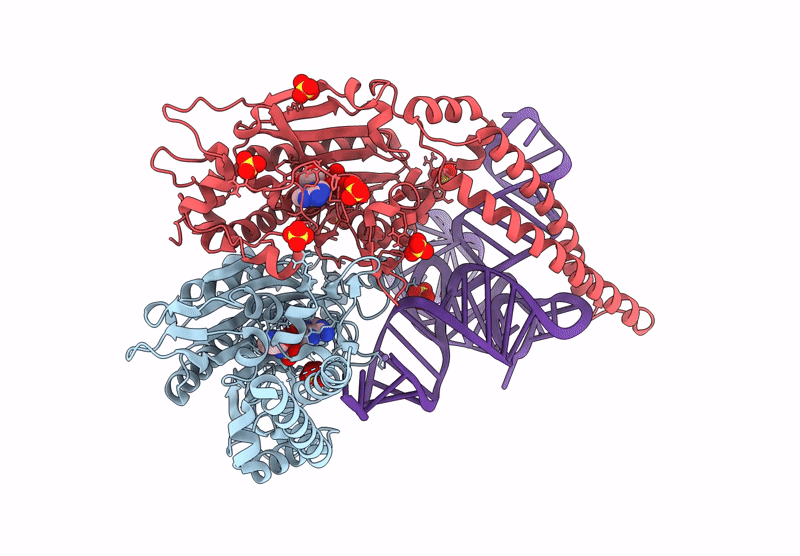
Deposition Date
2025-04-04
Release Date
2025-05-14
Last Version Date
2025-12-10
Entry Detail
PDB ID:
9QRP
Keywords:
Title:
Thermus thermophilus seryl-tRNA synthetase bound to tRNA(ser)(GGA) and seryl-adenylate analogue.
Biological Source:
Source Organism:
Thermus thermophilus HB8 (Taxon ID: 300852)
Host Organism:
Method Details:
Experimental Method:
Resolution:
2.70 Å
R-Value Free:
0.22
R-Value Work:
0.18
R-Value Observed:
0.18
Space Group:
P 21 21 21


